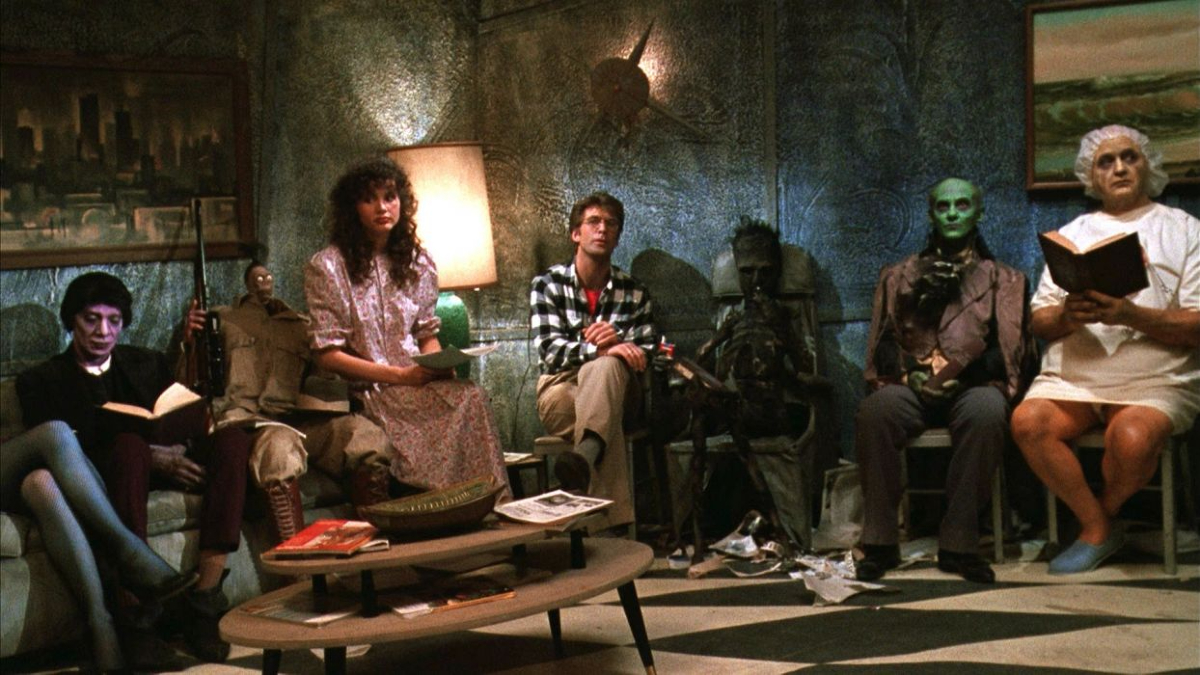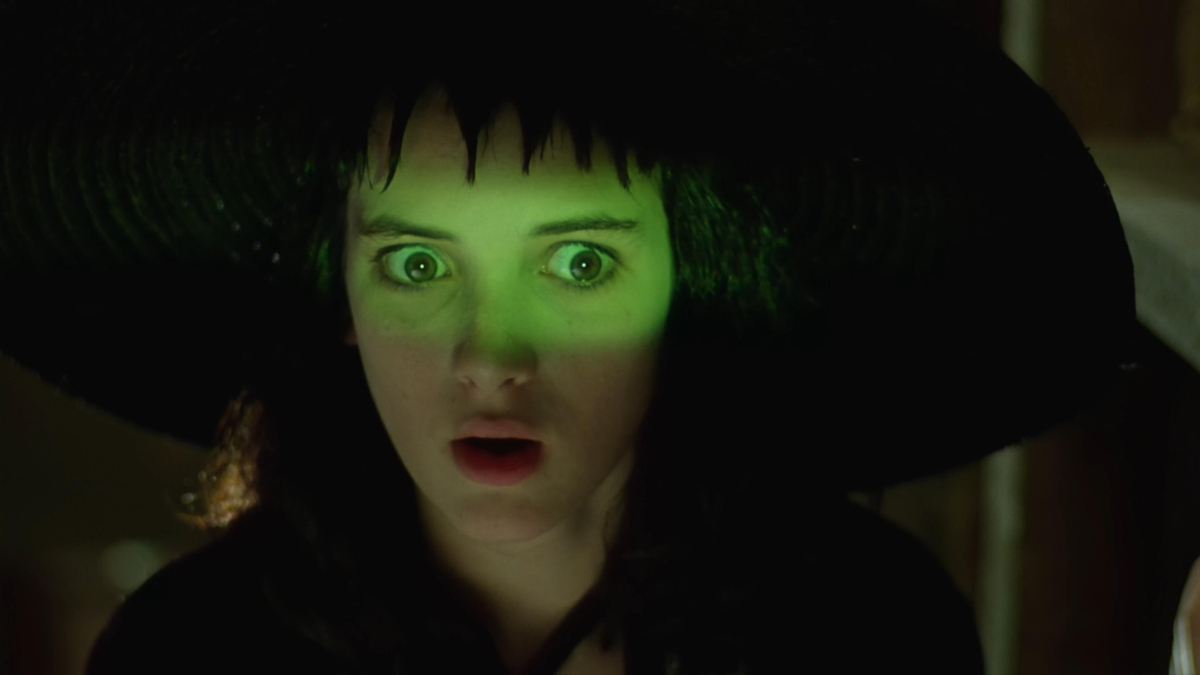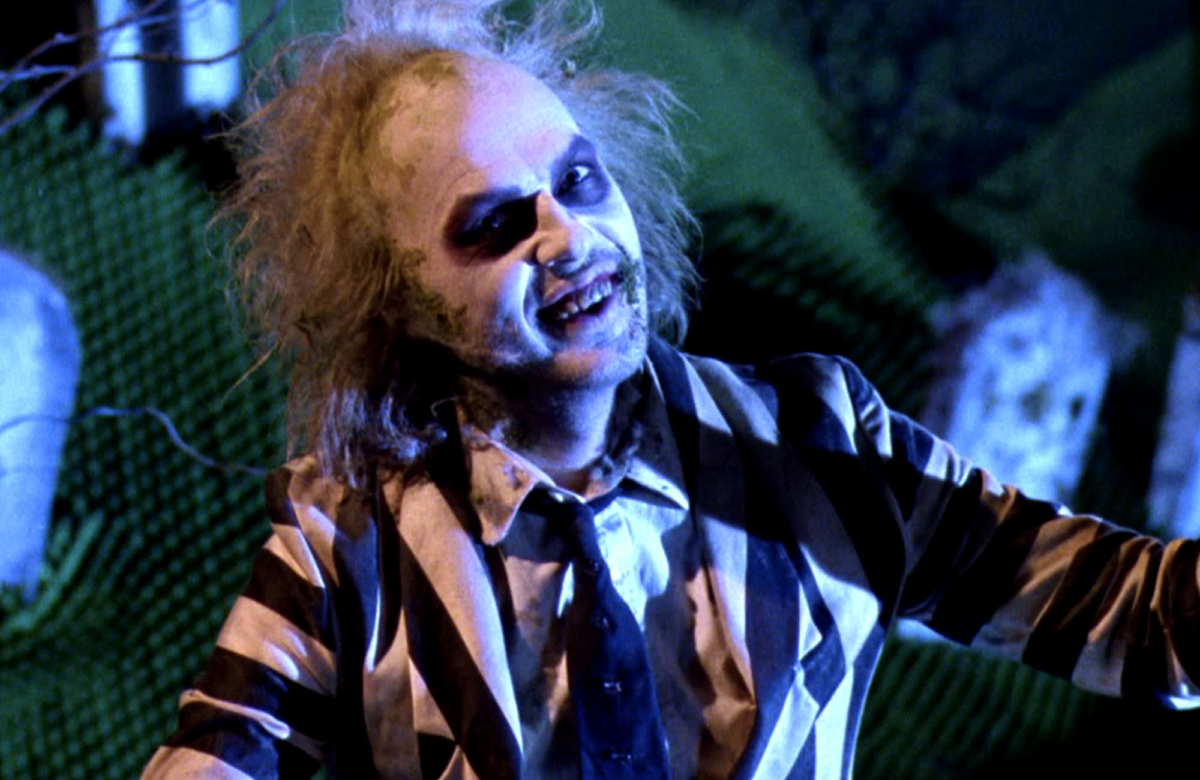What is the best Tim Burton movie to watch on Halloween? This question has come up more than once recently, leading our own Rachel Leishman and Kimberly Terasaki to debate whether The Nightmare Before Christmas is a better Halloween or Christmas movie. While “Halloween” is arguably Burton’s brand domain, I’d also argue that his best Halloween movie is Beetlejuice.
If we’re assigning holidays to Burton movies, then Batman Returns (and Batman, by association) is a Christmas movie, Edward Scissorhands is for Valentine’s Day, Sleepy Hollow is for Thanksgiving time, Big Fish is for Fathers Day, Dumbo is for Mothers Day, Pee-wee’s Big Adventure is for the last day of school / the first day of summer, Ed Wood is for National Coming Out Day—is this schtick running out of juice yet?—and Mars Attacks is for Earth Day. And if I have to pick a side in the aforementioned debate, then The Nightmare Before Christmas is a Christmas movie because it’s a musical and Santa is in it. Everything else Tim Burton directed, save for Frankenweenie, is for Trash Day.
Beetlejuice is, by far, the perfect Tim Burton movie to watch on or around Halloween. Released in 1988, the horror comedy stars a wee Winona Ryder as teen goth icon Lydia Deetz, whose family moves into a rural home inhabited by the ghosts of newlyweds Adam and Barbara Maitland—played by hottie-boom-botties Geena Davis and Alec Baldwin. (It may be hard for some of our younger readers to believe, but Baldwin was once extremely sexy and completely sufferable.) Struggling to accept their new identities as ghosts and the rich dicks who just moved into their dream house, Adam and Barbara unwisely enlist the services of Betelgeuse, a poltergeist who specializes in terrorizing mortals, played to obnoxious perfection by Michael Keaton.
Not only does Beetlejuice embody the spirit of the holiday, but it also contains much of the iconography we’ve come to associate with Halloween. In a feeble attempt to scare off the Deetz family, Adam and Barbara cut eye holes into some sheets, becoming spooky lil sheet ghosts. Their afterlife caseworker Juno (the late, great Sylvia Sidney) teaches the couple how to contort their faces into horrifying shapes reminiscent of rubbery Halloween masks. The underworld itself is filled with Halloween costume fodder. There’s Miss Argentina, the beautiful blue-skinned receptionist who took her own life; the football players who died in a bus crash; the explorer guy with the shrunken head (courtesy of a witch doctor); the charred corpse smoking a cigarette, and so on.

Lydia and her stepmom, Delia (Catherine O’Hara), are aspirational style icons and obvious costume inspo, each sporting various looks throughout Beetlejuice. Veiled Lydia with a camera and a journal, undead bride Lydia in her red wedding gown, schoolgirl Lydia dancing to Harry Belafonte. Speaking of which, arguably the best costume idea in Beetlejuice is Delia during the “Banana Boat” dinner sequence, shrimp fingers optional.
The production design in Beetlejuice, like most early Tim Burton films, is incredible. Delia’s vaguely threatening sculptures, the fluorescent-tinged bureaucracy of the underworld, and the Deetzes’ whole goth art deco aesthetic are a spooky kid’s dream. But the best design elements of the film are in the model town Adam built and keeps in the attic, and where Betelgeuse lives. When Adam and Barbara are transported to the tiny town to meet the titular poltergeist, the details are out of control. It’s uncanny valley kitsch, best exemplified in the scene where the Maitlands go to the cemetery to dig up Betelgeuse with little shovels, removing the rubbery slabs of grass to reveal layers of packed-newspaper earth. (The scene in which Betelgeuse encounters an undead brothel and horns spring out of his body—because he’s horny—is a close second in the vibes department.)
Where most horror comedies tend to tip the scales in favor of humor, Beetlejuice successfully balances both genres. Keaton gives an all-time great comedic performance as the ghost with the most, but there are genuinely scary moments, too. At the end of the dinner scene, when the bannister of the staircase transforms into a gigantic snake-monster with Betelgeuse’s face (one of several effects achieved with stop-motion animation), it’s upsetting. When Adam and Barbara try to leave the house, they discover that doing so places them in a desert-like interdimensional limbo populated by huge, hungry sandworms. And, in the film’s climactic scene, Delia’s friend Otho (Glenn Shadix, another dearly departed legend) conducts a seánce to summon Adam and Barbara in corporeal form. We watch with mounting dread as they become shriveled corpses; Adam moves to take Barbara’s hand, and her fingers disintegrate.

Scariness is a spectrum, and Beetlejuice hits on all kinds of horrors: the existential ones, of course, but also the horrors of being a teen girl with an annoying stepmom and feelings that often go ignored; the horrors of figuring out what it means—and takes—to be a successful artist in a capitalist society; the horrors of losing your home, renovating a new one, and the bureaucracy that prevents us from getting the things we need—even in the afterlife! (The film also gestures clumsily at an allegory for gentrification, though Burton is maybe a little too self-centered to execute it.)
Maybe the scariest part of Beetlejuice is the notion that there is a fate worse than death; that the afterlife is an extension of the living, and that there is an ultimate death from which you cannot return. This idea in particular struck me as a young Burton fan who, at the age of six, sobbed through the end of Edward Scissorhands and couldn’t sleep for weeks—not because the visuals were upsetting, but because the movie ends with a seriously injured Edward retreating alone to his father’s house on the hill, and then … no one ever sees him again. No one checks on him to make sure he’s okay. Nothing. I know Winona Ryder and her family are supposed to be “the good people,” but there is an argument to be made that actually everyone in Edward Scissorhands is awful.
As an anxious child, I wasn’t scared of boogeymen and spiders. My fears were entirely existential. Beetlejuice lured me in with its kitschy goth trappings, but it was Burton’s darkly comedic and frank take on death that resonated with me. (Also, not for nothing: Betelgeuse is hot.) The sublime marriage of humor and horror, of the living and the dead, of ghosts and spirits, of teen girls and ghoulish men, with an aesthetic that is black and white and red all over—look, not to get off-topic again, but in the words of Burton’s Christmas musical: this is Halloween.
(featured image: Warner Bros.)










Published: Oct 27, 2023 03:26 pm